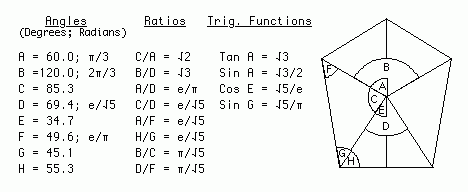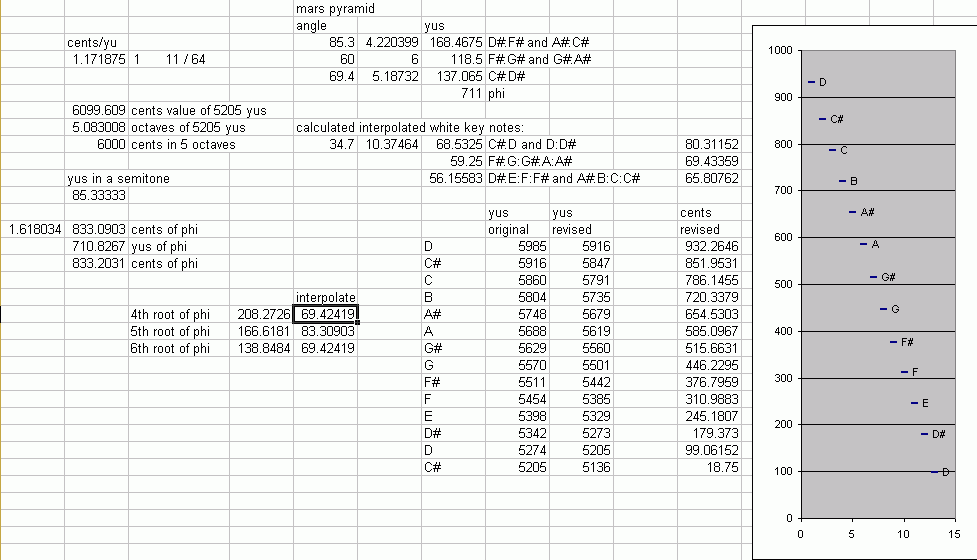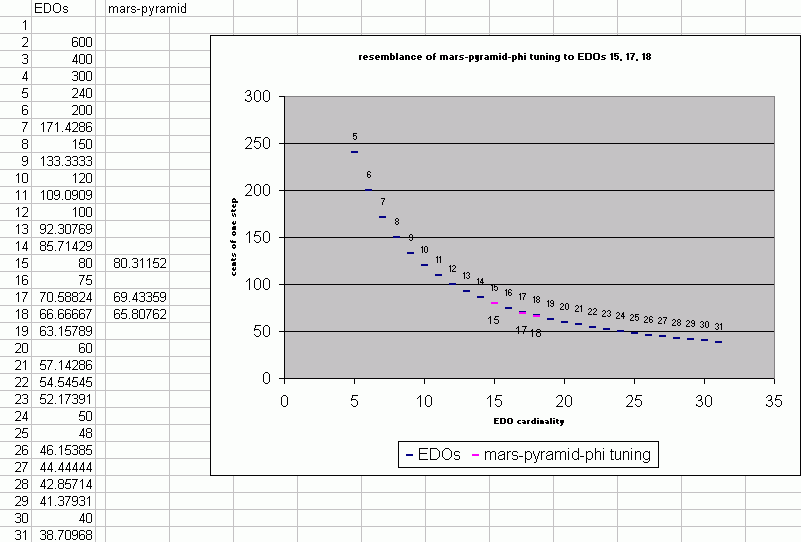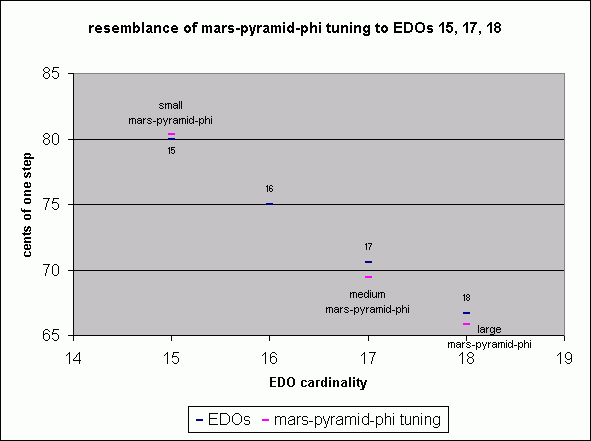Mars-pyramid tunings
- the nodes of the base of the pyramid are mapped onto the black keys.
- Interpolated nodes are mapped onto the white keys.
This tuning is based on the geometry of the D&M Pyramid of Mars:

The circle around the pentagon represents the identity-interval. Brink's original mars-pyramid symmetry uses phi, and many experimenters will want to use 2. Brink mapped the 5 vertices of the base of the pyramid to the 5 black keys of the Halberstadt keyboard, as follows:
, G# ,
, ,
F# A#
\ /
\ /
D# --- C#
(D)
And, noting that the sides on the left and right are longer than those on the top and bottom, interpolated the 7 white keys between the 5 vertices by plotting one white key on the edges at the top and bottom between the vertices (G, A, and D), two white keys between each of the longer sides on the left and right (E, F and B, C), thus:
(G) , G# , (A)
, ,
F# A#
(F) \ / (B)
(E) \ / (C)
D# --- C#
(D)
Brink started with the relative values of the black keys:
A# C# D# F# G# A#
\ / \ / \ / \ / \ /
85.3 69.4 85.3 60 60 degrees (out of 360)
phi^(1/5) phi^(1/6) phi^(1/6) approximate roots of phi
then interpolated the values of the white key notes:
D:D# = 34.7/360
Angular measurements of the Mars-pyramid:
The steps from D# up to C# are basically a type of 1/3-tone (used loosely), quite close to 19-edo, then there is a pair of bigger steps C#:D:D#.
Brink originally set 5205 yamaha units (yus) to C#4 and calculated all other values from there. The value for D was 5274 yus. Brink then revised the scale to map 5205 yus onto D, by subtracting 69 yus from all the original values. In this form, the intervallic step structure is perfectly symmetric about the tritone D:G# or G#:D.

Because this scale uses black keys as a basis, Brink (always imbuing his theories with his sense of humor) calls it "ebonic". The counterpart, basing a scale on white keys as in the standard diatonic tuning, would thus be "ivorian" -- embedded within this is a subtle pun by Brink on a reference to his late friend Ivor Darreg, the xenharmonic tuning pioneer.
Below is a pitch-height graph comparing the cents values of one step (degree) of each EDO of cardinalities 5 thru 31, and the three step sizes of the mars-pyramid-phi tuning. It can be easily seen that, purely by coincidence (or is it?), the large, medium, and small step sizes of the mars-pyramid-phi tuning correspond almost exactly to the step-sizes of 15-, 17-, and 18-edo respectively.


The tonalsoft.com website is almost entirely the work of one person: me, Joe Monzo. Please reward me for my knowledge and effort by choosing your preferred level of financial support. Thank you.
